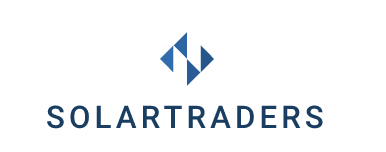The corona pandemic and the resulting restrictions shaped the years 2020 and 2021 immensely. This turnaround that accompanied the crisis was unexpected for many industries. Even the PV industry is still struggling to this day with the effects that have inevitably resulted from the innumerable restrictions. The following effects will continue to occupy us in the coming months:
- Delivery bottlenecks on various levels
- Endangerment of the completion of solar projects
- Price increase of raw materials
- Prevention of conferences and trade fairs
As we know, countless manufacturers are trying to counteract the effects of the corona pandemic. For this purpose, cheaper raw materials are used in production, for example, or completely new technologies are even developed. Due to the high demand for solar products caused by climate change, well-known manufacturers create new innovations and technologies almost every month.
Such new products from major Chinese manufacturers are presented annually at the world’s largest solar PV trade fair, also known as SNEC. Despite the pandemic restrictions, the trade fair was able to take place in Shanghai this summer.
Vincent Shaw, editor of PV magazine, went among the people in China and attended the world’s largest trade fair. In this article we want you to summarize the impressions and trends gathered by Shaw.
Solar market trends: The SNEC trends at a glance
Due to global restrictions, only a few international visitors were able to take part in the SNEC. At the fair itself, a total of 220,000 visitors from the regional area were identified. Despite the decrease in the number of visitors from the international area, this was a very clear number of visitors. A total of 2,000 companies presented their latest products in front of the visitors. According to Vincent Shaw, various trends among manufacturers quickly emerged.
These include the following trends:
- n-type crystalline silicon technologies
- 182 mm or 210 mm cell size
- Higher performance (520 watts to 800 watts)
- BIPV development (building-integrated photovoltaic products)
- Bigger inverters
N-type crystalline silicon technologies
According to Shawn, the n-type cell was very well represented among the manufacturers at the fair. Longi Solar and Jinko Solar in particular presented innovative products based exclusively on N-TOPCon technology. There were also well-known companies such as Trina Solar, Tongwei and JA Solar that use both n-type cells and p-type cells within their production lines. Manufacturers such as Sunport, Candian Solar or Risen, who currently only equip their new products with p-type cells, were also represented at the fair. According to Shawn, however, there was a generally positive response to the N-type at the trade fair, so that manufacturers such as Sunport and Candaian Solar also announced that they wanted to switch to the N-TOPCon technology in the future.
Higher performance (520 watts to 800 watts)
Due to the increased cell size of 182mm or 210mm wafers, we usually have larger modules with much higher rated outputs.
In the following table we have summarized the respective module formats that were presented within the SNEC with the nominal power supplied with them.
| 182mm PERC-Panel | 520 W ? 600 W |
| 210mm PERC-Panel | 540 W ? 620 W |
| Large format module from JA Solar (210mm Wafer) | 800 W |
| n-type TOPCon or HJT technology with 182/210 mm wafer | 700 W |
BIPV development (building-integrated photovoltaic products)
Building-integrated photovoltaic products were also a topic at this fair. Jinko Solar presented BIPV color walls and BIPV roof products, among other things. Trina Solar, on the other hand, convinced with a specially developed BIPV solution, which is known under the name ?Trina Tile?. This solution is only intended for roofs. Yingli, Chint and Maxeon also presented specially designed BIPV solutions.
Bigger inverters
The expansion of the module output meant that inverter manufacturers placed high-performance string inverters for 1500 V systems on the market. In this case, the usual power increases to 320 kW. The increase in the MPPT currents was 45 A and more. GoodWe even saw an increase in its new inverter product GW225KN-HT to 60 A.
To meet the requirements for integrating storage into future PV systems, most inverter manufacturers have equipped their inverters with new technologies to ensure that they are compatible with the upcoming solar panel, storage and inverter. Even module manufacturers like Trina Solar and Jinko have launched their own combinations of solar modules, storage and inverters.
References
Vincent Shaw ? PV-Magazin; T SNEC trends in 2021; 08.07.2021; https://www.pv-magazine.com/magazine-archive/snec-trends-in-2021/
